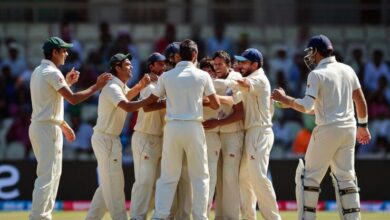zimbabwe national cricket team vs india national cricket team timeline: A Detailed Timeline of Rivalry

Cricket is often referred to as a religion in many countries, and in the case of Zimbabwe and India, the sport serves as a medium for cultural exchange and competitive spirit. The rivalry between the zimbabwe national cricket team vs india national cricket team timeline is an intriguing one, marked by historical moments, notable performances, and evolving narratives. This article explores the timeline of their encounters, from their early meetings to the present day, highlighting key matches and the broader context of cricketing relations between these two nations.
The Early Years: Establishing the Rivalry
1983: The Beginning of International Cricket for Zimbabwe
Zimbabwe gained Full Member status in 1992, but before that, they participated in the 1983 Cricket World Cup as an associate nation. Their performance drew international attention, paving the way for future encounters with more established teams, including India. However, the first significant match between Zimbabwe and India came a bit later.
1992: The First ODI Encounter
On March 15, 1992, during the 1992 ICC Cricket World Cup, India faced Zimbabwe for the first time in an ODI. Played at the Harare Sports Club, India won convincingly by 70 runs. This match marked the beginning of a cricketing rivalry that would see various highs and lows.
The Rise of Zimbabwe Cricket
The 1990s saw Zimbabwe emerging as a competitive team, showcasing talent and skill that often surprised their opponents. Their matches against India during this period became focal points of interest.
1995: The Epic ODI Match
On October 14, 1995, during a bilateral series in India, the two teams faced off in an ODI in Mohali. Zimbabwe, chasing 252 runs, produced a remarkable performance to win by 3 runs. This victory was a watershed moment for Zimbabwean cricket, highlighting their capability to compete against established teams.
1999: The World Cup Shock
Zimbabwe’s performance in the 1999 ICC Cricket World Cup was noteworthy, particularly in their group stage match against India on June 24. India, batting first, set a total of 252. However, Zimbabwe stunned everyone by successfully chasing down the target, winning by 10 runs. This match is often remembered as one of the highlights of Zimbabwean cricket history and a significant low for India in that tournament.
The Changing Dynamics of the Rivalry
2000s: A Shift in Power
As the 2000s began, the balance of power in the rivalry shifted. India was solidifying its position as a cricketing powerhouse, while Zimbabwe faced challenges, including political instability and a decline in player quality.
2002: The ODI Series
In an ODI series held in Zimbabwe, India showcased their strength, winning all matches. The series highlighted the growing disparity between the two teams, with India demonstrating dominance and skill. Zimbabwe’s struggle to maintain competitive cricket became apparent, leading to a downturn in their performance.
2005: The Decline of Zimbabwe Cricket
The cricketing landscape in Zimbabwe underwent significant changes after 2005, with many key players leaving the national team due to political and economic instability. This decline affected their competitiveness against teams like India. In bilateral series during this time, India consistently outperformed Zimbabwe, leading to one-sided matches.
Resurgence of Zimbabwean Cricket
2010: Rebuilding Phase
By 2010, Zimbabwe cricket began a slow but steady resurgence. New talent emerged, and they started to regain their competitive edge. In July 2010, during a tri-series that included India and Sri Lanka, Zimbabwe faced India in a closely contested match. India won, but Zimbabwe’s improved performance was evident, marking a turning point in their cricketing journey.
2015: ICC Cricket World Cup
During the 2015 ICC Cricket World Cup, India and Zimbabwe faced off in a group match on February 14, 2015, at the Eden Park in Auckland. India won convincingly, with a score of 300 runs, while Zimbabwe managed only 287 in response. Despite the loss, Zimbabwe’s resilience in a high-pressure tournament was commendable and garnered respect.
The Modern Era: Emerging Talent and Renewed Rivalry
2016: T20 Series
In 2016, India toured Zimbabwe for a limited-overs series, which included T20 matches. The series marked an opportunity for Zimbabwe to showcase its new talent against a strong Indian side. India won the series 3-0, but the matches were competitive and indicated Zimbabwe’s gradual improvement.
2018: The ODI Series
India and Zimbabwe met again in July 2018 for a three-match ODI series. India continued to assert its dominance, winning the series comprehensively. However, the matches provided a platform for young Zimbabwean players to gain invaluable experience.
2020: The Impact of COVID-19
The pandemic disrupted international cricket, but it also presented an opportunity for teams like Zimbabwe to reassess their strategies and develop young talent. During this period, discussions surrounding cricketing ties between nations, including India and Zimbabwe, became prominent, focusing on how to elevate Zimbabwe’s status in international cricket.
Recent Developments: Future Prospects
2022: Resilience and Hope
By 2022, Zimbabwe’s cricketing landscape had improved significantly. Their participation in various ICC tournaments and bilateral series showcased their growth. In June 2022, Zimbabwe faced India in a limited-overs series, which brought attention back to this rivalry. Although India won, the matches highlighted Zimbabwe’s potential and competitive spirit.
2023: A New Chapter
As of 2023, the future looks promising for both teams. With the ICC Cricket World Cup approaching, the dynamics of cricket are ever-evolving. Zimbabwe aims to reclaim its place among the competitive cricketing nations, while India seeks to maintain its status as a powerhouse. Future encounters are anticipated with excitement, as both teams continue to develop their talents and strengthen their strategies.
The Cultural Impact of the Rivalry
Beyond the matches and statistics, the rivalry between Zimbabwe and India has cultural significance. Both countries have rich cricketing traditions that reflect their respective histories and identities. For Zimbabwe, cricket represents resilience and hope, while for India, it is a source of national pride and unity.
Fan Engagement
The matches between these two teams have garnered considerable attention from fans across the globe. Zimbabwean fans have shown unwavering support despite challenges, while Indian fans bring passion and energy to every encounter. The camaraderie between the fan bases showcases the spirit of cricket, transcending borders and cultural differences.

Media and Broadcasting
The rivalry has also attracted media attention, with broadcasts of matches reaching audiences worldwide. Commentary and analysis surrounding these encounters contribute to the narrative of cricketing relations between the two nations, fostering a deeper understanding of their cricketing journeys.
Conclusion
The timeline of the zimbabwe national cricket team vs india national cricket team timeline encapsulates a story of growth, resilience, and competitive spirit. From their early encounters to the present day, the rivalry reflects the evolution of cricket in both countries.
As Zimbabwe continues to rebuild and strengthen its cricketing framework, and India seeks to maintain its status as a cricketing giant, future encounters promise to be exciting and full of anticipation. The essence of this rivalry goes beyond mere statistics; it is a testament to the power of sport in bringing people together, celebrating cultures, and inspiring generations.
As cricket fans, we look forward to witnessing more thrilling matches between these two teams, celebrating not just the victories but the spirit of the game itself. Whether it’s an ODI, T20, or Test match, each encounter adds a new chapter to this enduring rivalry, reminding us of the beauty and excitement that cricket brings to our lives.





